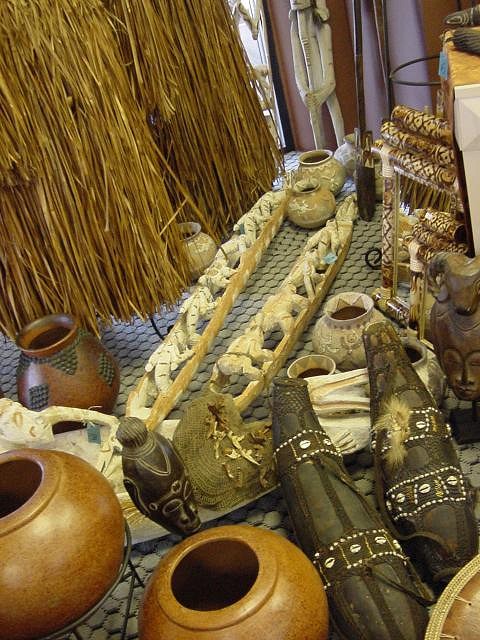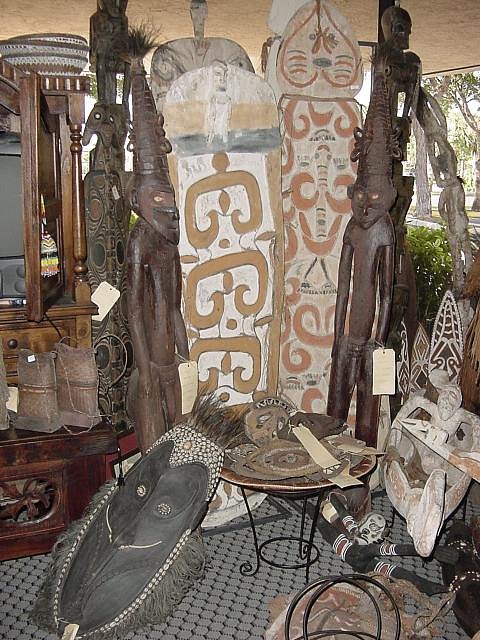Tiki Central / Collecting Tiki / Oceania, Etc: vendor of South Seas Art
Post #164662 by I dream of tiki on Thu, Jun 9, 2005 12:09 AM
|
IDOT

I dream of tiki
Posted
posted
on
Thu, Jun 9, 2005 12:09 AM
Asmat Canoes
"Tribal warfare was officially outlawed by Irian Jaya's Dutch rulers in the 1950s. When the Indonesian government took over the administration in 1962, it began the repression and destruction of traditional Asmat art and culture. This was partly because the artifacts were closely linked to warfare, headhunting, and cannibalism, but it was also an attempt to impose Indonesian rule on the historically unregulated people of Irian Jaya. Due to harsh governmental actions which not only forbade all ceremonies and feasts because of their ties to headhunting, but also outlawed carving and the use of carving tools, these integral aspects of Asmat culture were in danger of dying out. In front of the asmat boats are 2 large rare asmat gourds used for storage." More of the Asmat Collection "Some aspects of Asmat society have been preserved with the support of missionaries such as the Crosiers, who collected and safeguarded thousands of Asmat cultural objects after the 1962 ban and subsequent widespread destruction. The people of the preservation effort encouraged the Asmat people to pursue their traditional culture--without the cycle of killing that was once its focal point. In recent years the Crosiers and others have promoted the sale and trade of Asmat artifacts. Apart from directly benefiting the Asmat, this has created a market for the art which has ultimately engendered a larger awareness of the Asmat people and the changes that have occurred within their culture as they face a future in a world ruled by values far different from their own." "Sepik masks are seen in front portion of photo." [ Edited by: I dream of tiki 2009-02-21 22:58 ] |


